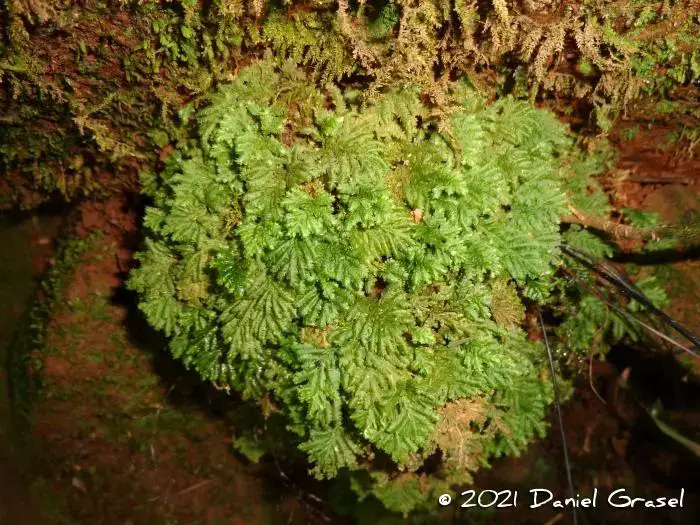Waaiermos-Hypopterygium-tamarisci-habitus-tussen-voegen-oude-muurtjes-van-kas-Foto.ppm from: https://www.researchgate.net/figure/Waaiermos-Hypopterygium-tamarisci-habitus-tussen-voegen-oude-muurtjes-van-kas-Foto_fig2_348480735
Introduction
Welcome, fellow moss enthusiasts! Today, we’re going to delve into the fascinating world of Hypopterygium tamarisci (Sw.) Brid. ex Müll.Hal., a captivating member of the Hypopterygiaceae family, commonly known as Hypopterygium. This unassuming yet remarkable moss has captured the hearts of bryologists and nature lovers alike, and we’re about to uncover its secrets.
Background
Before we dive into the nitty-gritty details, let’s set the stage. Bryophytes, or mosses, are a diverse group of non-vascular plants that have been around for millions of years. They play a crucial role in various ecosystems, acting as pioneers in colonizing new environments and providing a cozy home for countless microorganisms.

medium.jpeg from: https://www.inaturalist.org/taxa/355848-Hypopterygium-tamarisci
Main Content
Morphology and Identification
Hypopterygium tamarisci is a pleurocarpous moss, meaning its stems and branches grow horizontally along the substrate. Its vibrant green hue and delicate, feathery appearance make it a true beauty in the moss world. One of its most distinctive features is the presence of pseudoparaphyllia, which are tiny, leaf-like structures that adorn the stems, adding to its intricate charm.
Global Distribution and Habitat
This moss is a true globetrotter, found on every continent except Antarctica. It thrives in moist, shaded environments, often clinging to tree trunks, rocks, and soil in temperate and tropical regions. Hypopterygium tamarisci is a master of adaptation, able to withstand a wide range of environmental conditions, making it a resilient and versatile species.
Ecological Roles and Adaptations
Like many mosses, Hypopterygium tamarisci plays a vital role in its ecosystem. It acts as a sponge, absorbing and retaining moisture, creating a microhabitat for various invertebrates and microorganisms. Additionally, its dense mats help prevent soil erosion and contribute to nutrient cycling.
One of the most fascinating adaptations of this moss is its ability to undergo desiccation and revive when water becomes available again. This remarkable trait, known as poikilohydry, allows it to survive in harsh environments and bounce back to life after prolonged dry periods.
Case Studies/Examples

3637964605_3b5ab72119_b.jpg from: https://www.flickr.com/photos/gjshepherd/3637964605
In the Pacific Northwest, Hypopterygium tamarisci

IMG_1552_Hypopterygium.jpg from: http://briofitasdemexico.blogspot.com/2016/11/hypopterygium-tamariscinum-hedw-brid.html

hypopterygium-tamarisci.jpg from: https://www.earth.com/plant-encyclopedia/Bryophytes/Hookeriaceae/hypopterygium-tamarisci/en/
is a common sight in old-growth forests, where it carpets the ground and tree trunks, creating a lush, verdant tapestry. In New Zealand, it plays a crucial role in the unique ecosystems of the country’s temperate rainforests, providing habitat for a diverse array of invertebrates and contributing to the overall biodiversity of these ancient woodlands.
Technical Table

57439dbf967027ad2be61647b76451c77e61.jpg from: https://floradigital.ufsc.br/open_sp.php?img=24340

f68599e740f5711789c5bb2954d5ae7d.jpg from: https://www.pinterest.com/pin/hypopterygium-tamarisci–328692472818442806/
| Characteristic | Description |
|---|---|
| Phylum | Bryophyta |
| Class | Bryopsida |
| Order | Hypopterygiales |
| Family | Hypopterygiaceae |
| Genus | Hypopterygium |
| Species | tamarisci |
| Growth Form | Pleurocarpous |
| Habitat | Moist, shaded environments |
| Distribution | Cosmopolitan (except Antarctica) |
Conclusion
Hypopterygium tamarisci is a true marvel of nature, a testament to the resilience and adaptability of mosses. From its delicate beauty to its vital ecological roles, this unassuming plant has captured our hearts and minds. As we bid farewell to this moss adventure, we’re left with a lingering question: What other wonders of the bryophyte world await our discovery?

hypopterygium_arbuscula01.jpg from: https://www.chilebosque.cl/moss/hypopterygium_arbuscula.html

2470697896_95c2b18f35_b.jpg from: https://www.flickriver.com/photos/nuytsia_pix/2470697896/

46416625514_cf786a3ecd_b.jpg from: https://www.flickr.com/photos/civovic/46416625514